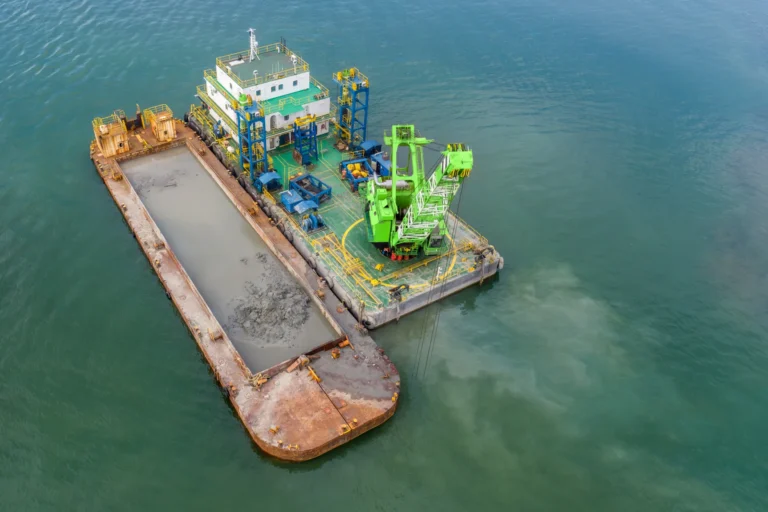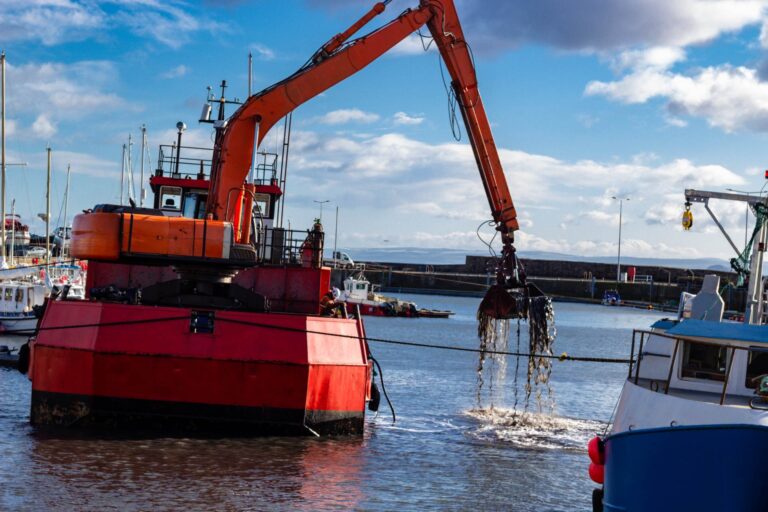Dredging is a critical process in various industries, including construction, mining, and environmental remediation. Whether it’s for deepening waterways, reclaiming land, or preventing flooding, dredging plays an essential role in maintaining and improving our infrastructure. However, dredging challenges often arise, and these can significantly impact the success of a project. If not addressed properly, these challenges can lead to delays, increased costs, and even environmental damage. In this article, we will explore common dredging challenges faced in these projects and provide practical dredging solutions to overcome them.
1. Environmental Challenges
1.1. Sediment Contamination
One of the most significant environmental dredging challenges is sediment contamination. Sediments often contain pollutants such as heavy metals, chemicals, and organic waste, which can pose severe risks to water quality, marine life, and surrounding ecosystems. When dredging these contaminated sediments, there is a risk of spreading pollutants, further exacerbating environmental issues.
Solutions:
- Implementing advanced sediment treatment technologies: These technologies help in treating contaminated sediments before, during, or after the dredging process, minimizing environmental impact and overcoming dredging issues related to contamination.
- Using environmentally friendly dredging techniques: Techniques such as confined disposal facilities (CDF) or the use of silt curtains can help contain and treat contaminated sediments, preventing them from spreading.
1.2. Regulatory Compliance
Adhering to environmental regulations is another significant dredging challenge. Regulatory bodies enforce strict guidelines to ensure that dredging activities do not harm the environment. Navigating these regulations can be complex, especially when dealing with multiple jurisdictions and varying standards.
Solutions:
- Regular consultation with environmental experts: Engaging with experts helps ensure that the project meets all regulatory requirements and avoids legal issues, which is critical to overcoming dredging challenges.
- Staying updated with local and international regulations: Continuous monitoring and adaptation to the latest regulations can prevent project delays and potential fines, providing effective dredging solutions for regulatory compliance.
2. Technical Challenges
2.1. Equipment Selection and Maintenance
Choosing the right dredging equipment is crucial for overcoming dredging issues. The wrong equipment can lead to inefficiencies, breakdowns, and increased costs. Additionally, maintaining this equipment is vital to avoid unexpected downtime and ensure the project stays on schedule. Equipment failure is a common technical dredging challenge that can derail a project.
Solutions:
- Regular maintenance schedules: Implementing a strict maintenance routine helps identify potential issues before they escalate, ensuring that the equipment remains operational throughout the project. This is a key strategy in overcoming dredging issues related to equipment failure.
- Investing in high-quality, reliable equipment: While the initial cost may be higher, investing in quality equipment can save money in the long run by reducing downtime and repair costs providing reliable dredging solutions.
2.2. Sediment Management
Handling and transporting dredged materials presents its own set of challenges in overcoming dredging issues. Issues like clogging, abrasion, and sediment settling can disrupt the dredging process and lead to inefficiencies. Proper sediment management is essential for overcoming these technical dredging challenges.
Solutions:
- Using specialized dredging pumps and systems: These tools are designed to handle specific types of sediments, reducing the risk of clogging and other operational issues and providing effective dredging solutions.
- Implementing effective sediment management plans: A well-thought-out plan can streamline the process of handling and disposing of dredged materials, minimizing disruptions and overcoming dredging challenges related to sediment transport.
3. Operational Challenges
3.1. Navigational and Access Issues
Accessing remote or difficult-to-reach dredging sites is a common operational challenge. Additionally, navigating through hazardous waters during dredging operations can pose significant risks to both the project and the crew. These navigational dredging challenges can significantly hinder project progress.
Solutions:
- Pre-dredging site assessments and surveys: Conducting thorough assessments helps identify potential access issues and plan alternative routes, which is a key step in overcoming dredging issues related to site access.
- Utilizing GPS and advanced navigation systems: These technologies assist in safe and efficient navigation, reducing the risk of accidents and delays and providing practical dredging solutions for operational challenges.
3.2. Project Delays and Budget Overruns
Delays and budget overruns are common in dredging projects, often caused by unforeseen technical or environmental challenges. These issues can significantly impact the overall timeline and profitability of the project. Managing these operational dredging challenges is crucial for project success.
Solutions:
- Detailed project planning and risk management: A comprehensive plan that includes risk assessments can help identify potential issues early and develop contingency plans, which are essential dredging solutions.
- Contingency budgeting for unforeseen challenges: Allocating a portion of the budget for unexpected issues can prevent financial strain and keep the project on track, aiding in overcoming dredging challenges related to budget overruns.
4. Social and Community Challenges
4.1. Stakeholder and Community Engagement
Gaining community support for dredging projects can be challenging, especially when concerns about noise, pollution, and disruption arise. Addressing these concerns effectively is crucial for maintaining good relations with the community and ensuring project success. Social dredging challenges often involve community resistance or concerns.
Solutions:
- Transparent communication and public consultations: Keeping the community informed and involved in the decision-making process helps build trust, address concerns proactively, and overcome dredging issues related to community engagement.
- Implementing noise and pollution control measures: Taking steps to minimize the project’s environmental impact can help alleviate community concerns and provide effective dredging solutions for social challenges.
4.2. Workforce Safety and Training
Ensuring the safety of workers in potentially hazardous dredging environments is a top priority. However, providing adequate training and enforcing safety protocols can be challenging, particularly in large-scale projects. Workforce safety is a significant social dredging challenge.
Solutions:
- Regular safety training sessions: Continuous training helps in keeping workers informed about the latest safety practices and protocols, an essential part of overcoming dredging issues related to safety.
- Strict adherence to safety guidelines and best practices: Implementing and enforcing safety standards ensures that the workforce remains safe and the project proceeds without incidents, providing practical dredging solutions for safety challenges.
Conclusion
Dredging projects are inherently complex, with numerous dredging challenges that can impact their success. By proactively addressing environmental, technical, operational, and social challenges, project managers can ensure that their dredging operations are efficient, cost-effective, and environmentally responsible. Investing in the right resources, equipment, and strategies is essential for overcoming these challenges and achieving successful outcomes in dredging projects.






